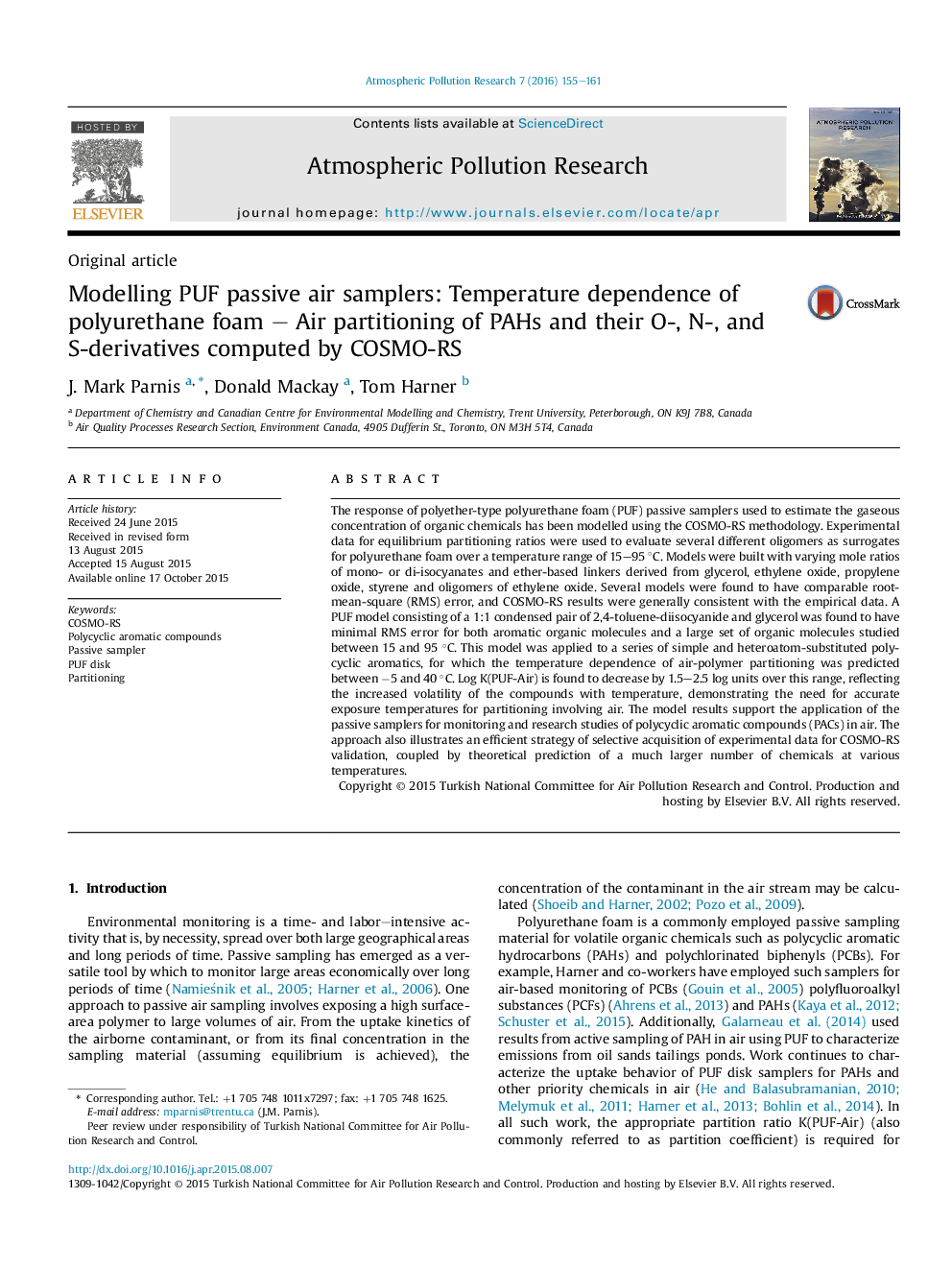| Article ID | Journal | Published Year | Pages | File Type |
|---|---|---|---|---|
| 4434717 | Atmospheric Pollution Research | 2016 | 7 Pages |
The response of polyether-type polyurethane foam (PUF) passive samplers used to estimate the gaseous concentration of organic chemicals has been modelled using the COSMO-RS methodology. Experimental data for equilibrium partitioning ratios were used to evaluate several different oligomers as surrogates for polyurethane foam over a temperature range of 15–95 °C. Models were built with varying mole ratios of mono- or di-isocyanates and ether-based linkers derived from glycerol, ethylene oxide, propylene oxide, styrene and oligomers of ethylene oxide. Several models were found to have comparable root-mean-square (RMS) error, and COSMO-RS results were generally consistent with the empirical data. A PUF model consisting of a 1:1 condensed pair of 2,4-toluene-diisocyanide and glycerol was found to have minimal RMS error for both aromatic organic molecules and a large set of organic molecules studied between 15 and 95 °C. This model was applied to a series of simple and heteroatom-substituted polycyclic aromatics, for which the temperature dependence of air-polymer partitioning was predicted between −5 and 40 °C. Log K(PUF-Air) is found to decrease by 1.5–2.5 log units over this range, reflecting the increased volatility of the compounds with temperature, demonstrating the need for accurate exposure temperatures for partitioning involving air. The model results support the application of the passive samplers for monitoring and research studies of polycyclic aromatic compounds (PACs) in air. The approach also illustrates an efficient strategy of selective acquisition of experimental data for COSMO-RS validation, coupled by theoretical prediction of a much larger number of chemicals at various temperatures.
